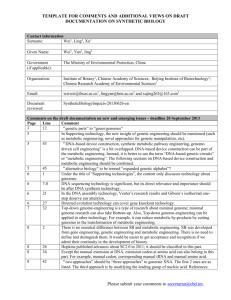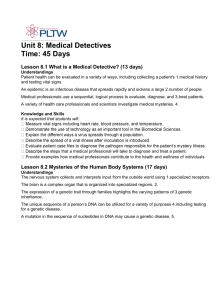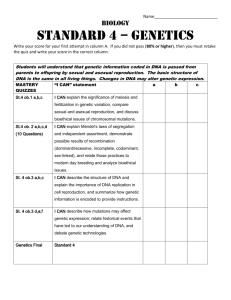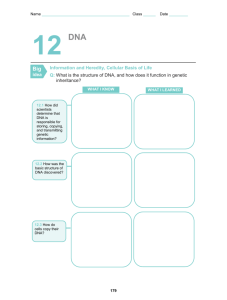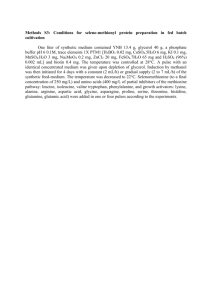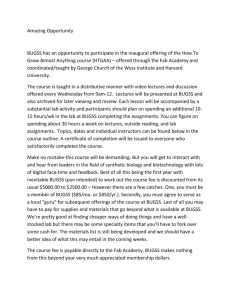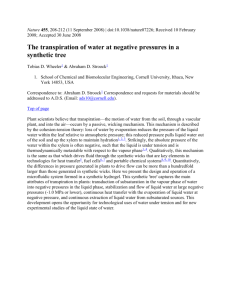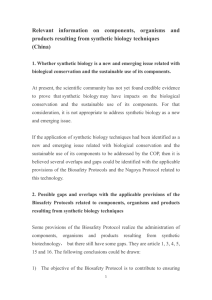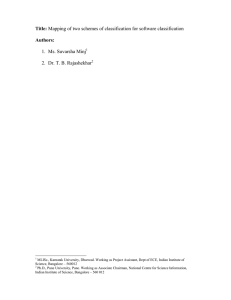Engineering Synthetic Genetic Systems to Manufacture Biologic
advertisement
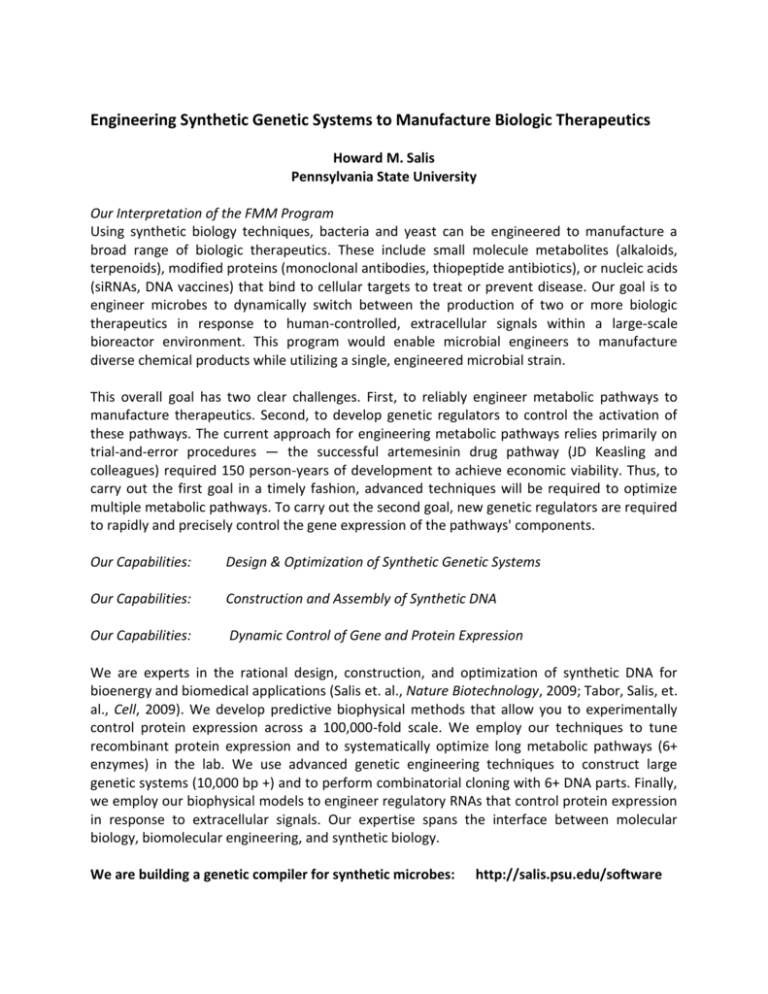
Engineering Synthetic Genetic Systems to Manufacture Biologic Therapeutics Howard M. Salis Pennsylvania State University Our Interpretation of the FMM Program Using synthetic biology techniques, bacteria and yeast can be engineered to manufacture a broad range of biologic therapeutics. These include small molecule metabolites (alkaloids, terpenoids), modified proteins (monoclonal antibodies, thiopeptide antibiotics), or nucleic acids (siRNAs, DNA vaccines) that bind to cellular targets to treat or prevent disease. Our goal is to engineer microbes to dynamically switch between the production of two or more biologic therapeutics in response to human-controlled, extracellular signals within a large-scale bioreactor environment. This program would enable microbial engineers to manufacture diverse chemical products while utilizing a single, engineered microbial strain. This overall goal has two clear challenges. First, to reliably engineer metabolic pathways to manufacture therapeutics. Second, to develop genetic regulators to control the activation of these pathways. The current approach for engineering metabolic pathways relies primarily on trial-and-error procedures — the successful artemesinin drug pathway (JD Keasling and colleagues) required 150 person-years of development to achieve economic viability. Thus, to carry out the first goal in a timely fashion, advanced techniques will be required to optimize multiple metabolic pathways. To carry out the second goal, new genetic regulators are required to rapidly and precisely control the gene expression of the pathways' components. Our Capabilities: Design & Optimization of Synthetic Genetic Systems Our Capabilities: Construction and Assembly of Synthetic DNA Our Capabilities: Dynamic Control of Gene and Protein Expression We are experts in the rational design, construction, and optimization of synthetic DNA for bioenergy and biomedical applications (Salis et. al., Nature Biotechnology, 2009; Tabor, Salis, et. al., Cell, 2009). We develop predictive biophysical methods that allow you to experimentally control protein expression across a 100,000-fold scale. We employ our techniques to tune recombinant protein expression and to systematically optimize long metabolic pathways (6+ enzymes) in the lab. We use advanced genetic engineering techniques to construct large genetic systems (10,000 bp +) and to perform combinatorial cloning with 6+ DNA parts. Finally, we employ our biophysical models to engineer regulatory RNAs that control protein expression in response to extracellular signals. Our expertise spans the interface between molecular biology, biomolecular engineering, and synthetic biology. We are building a genetic compiler for synthetic microbes: http://salis.psu.edu/software
